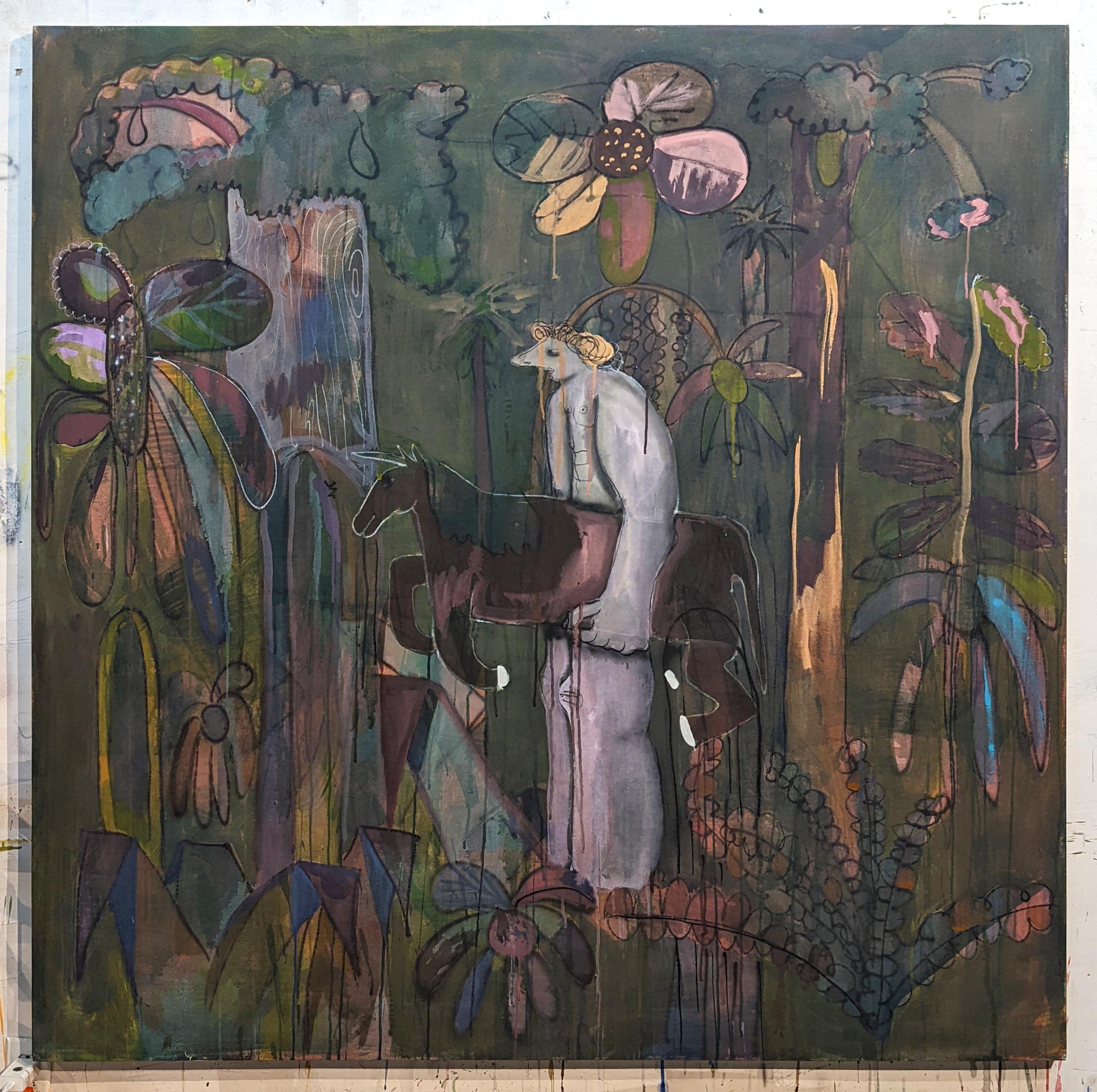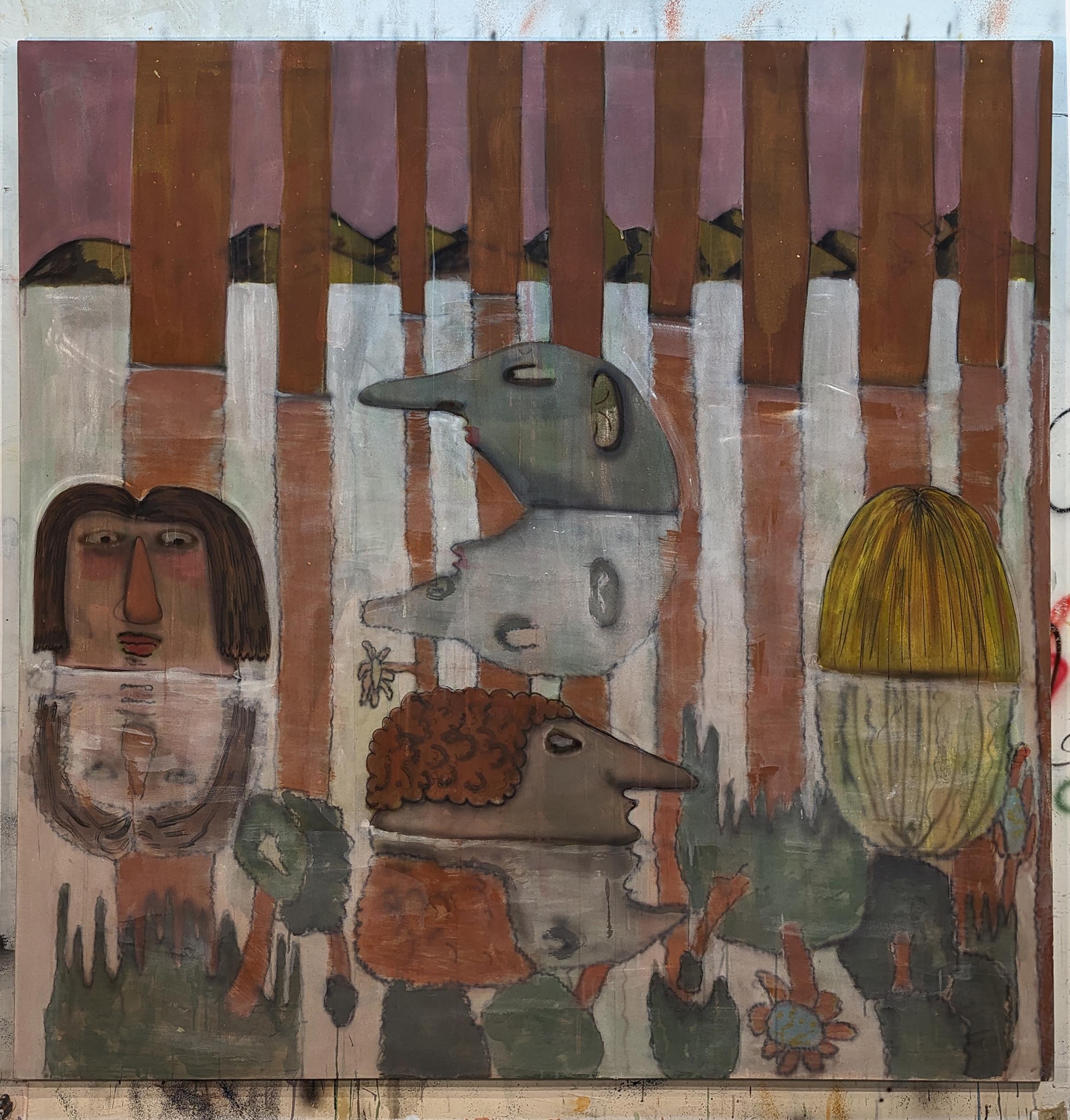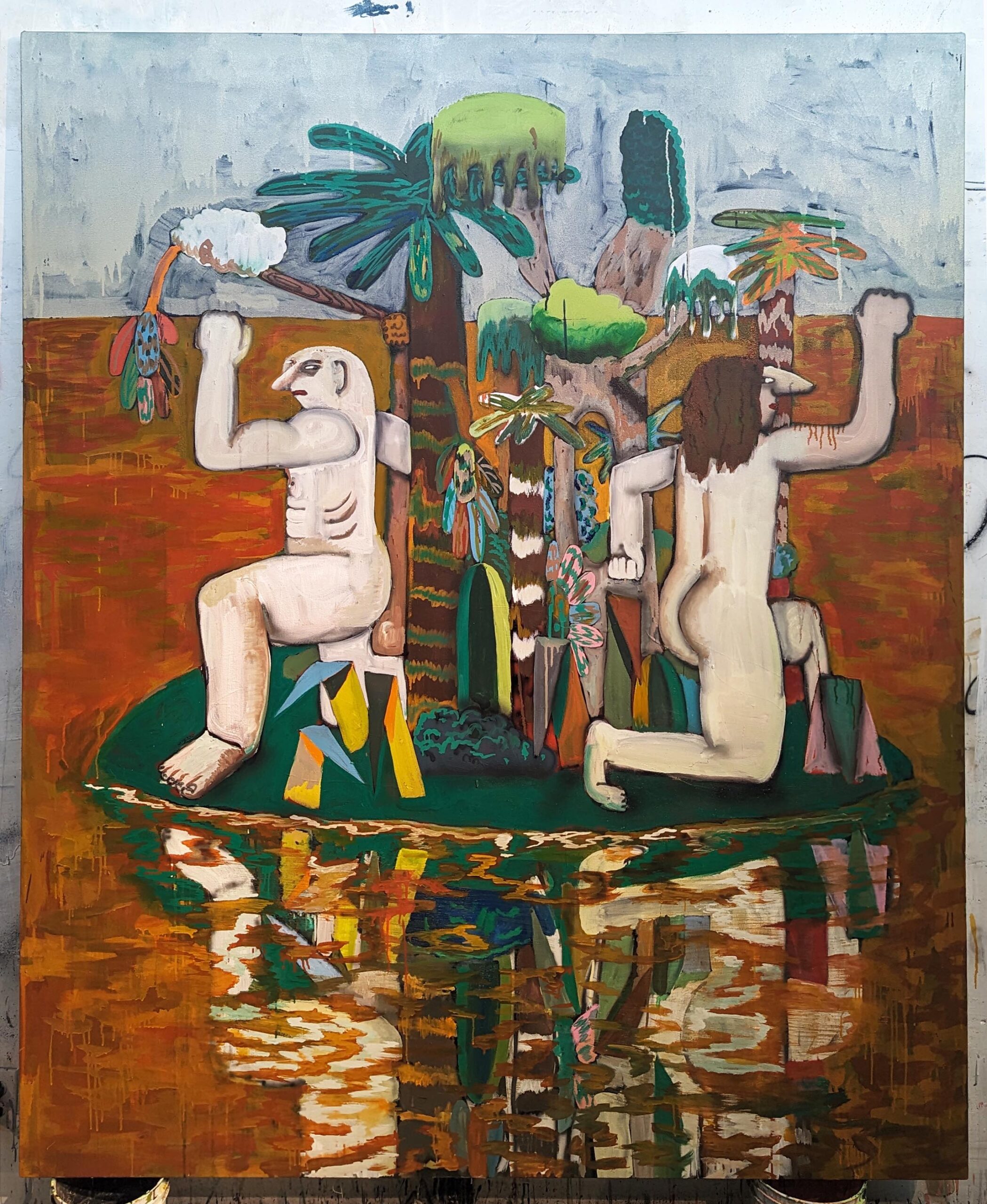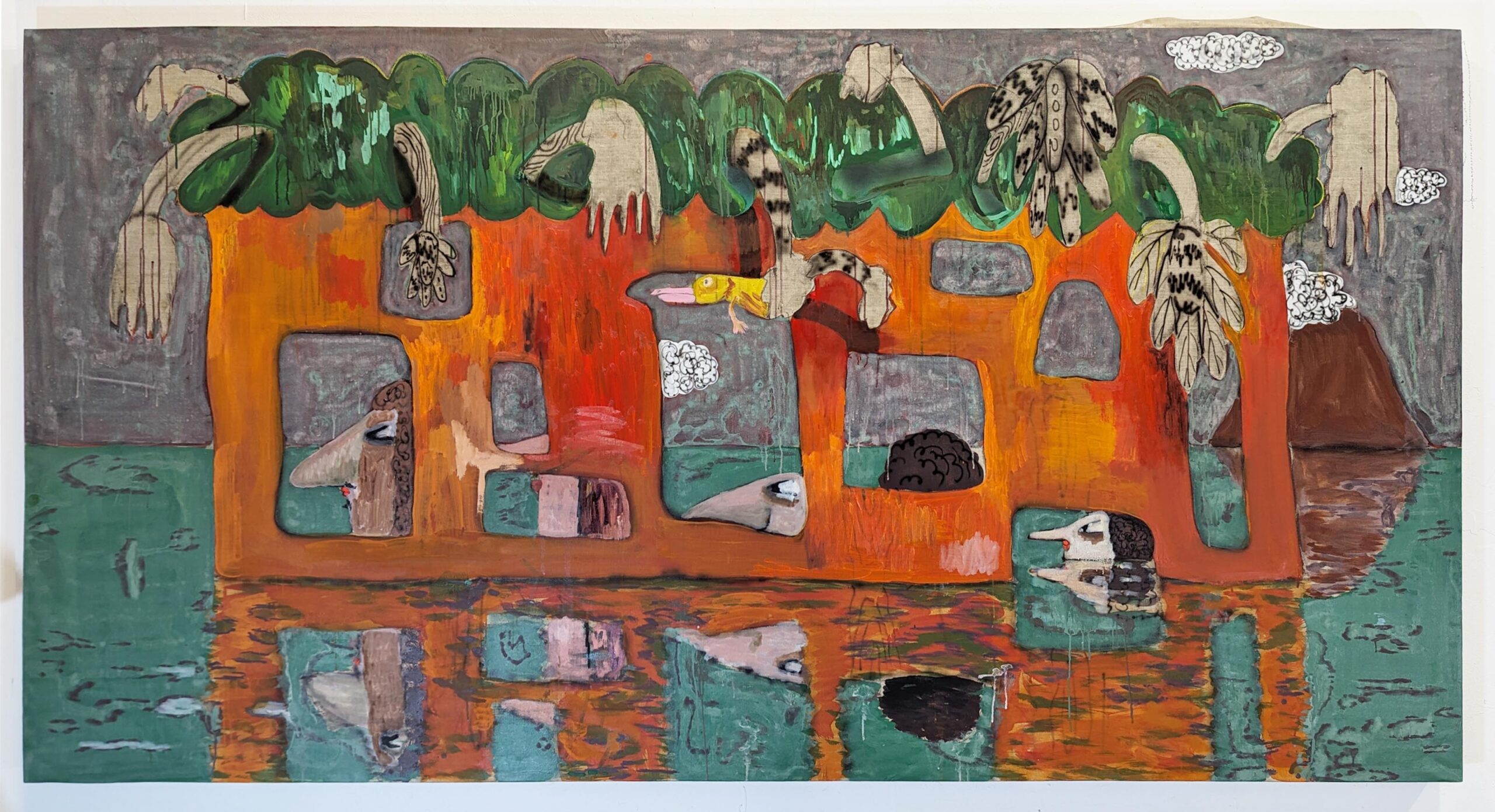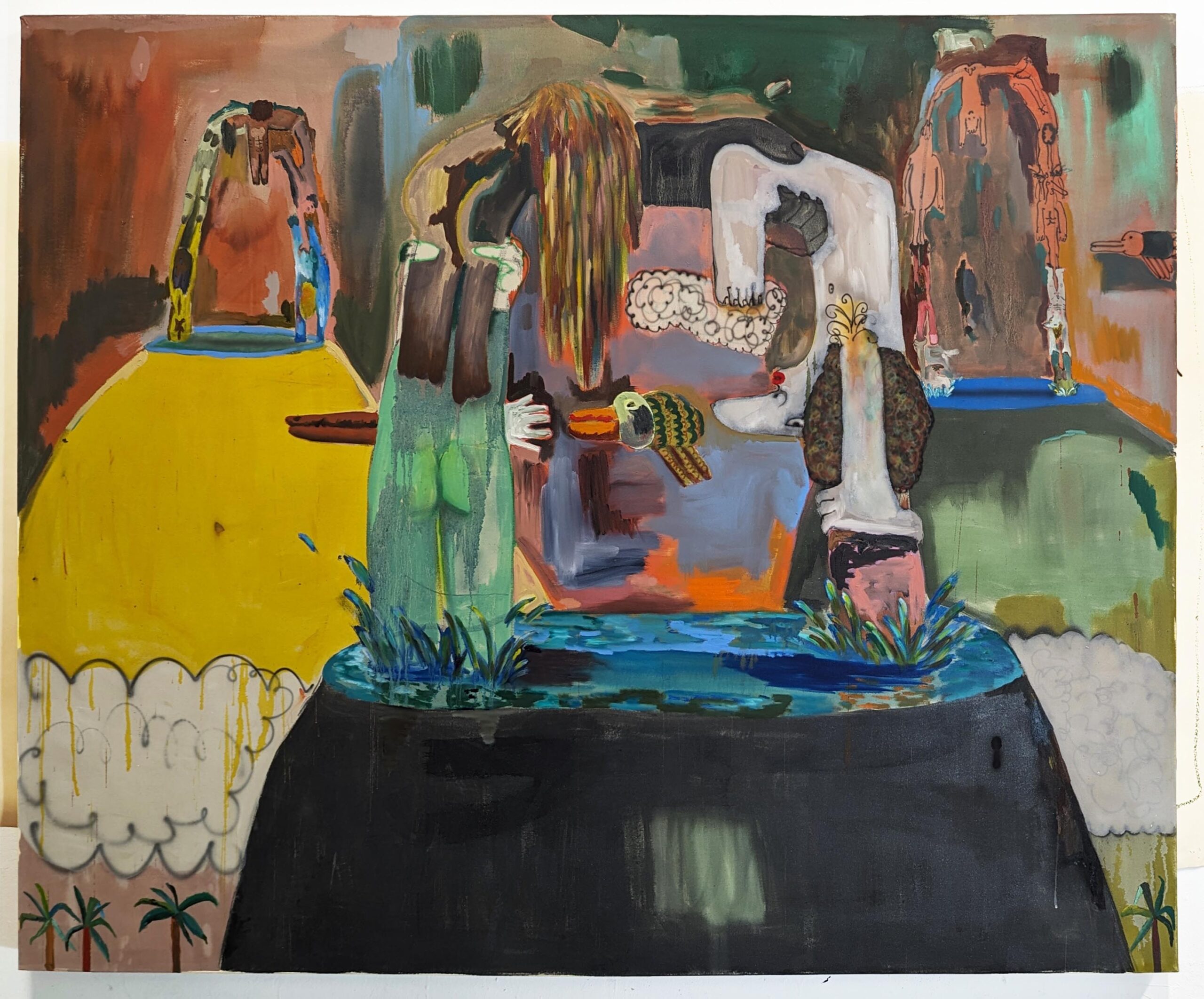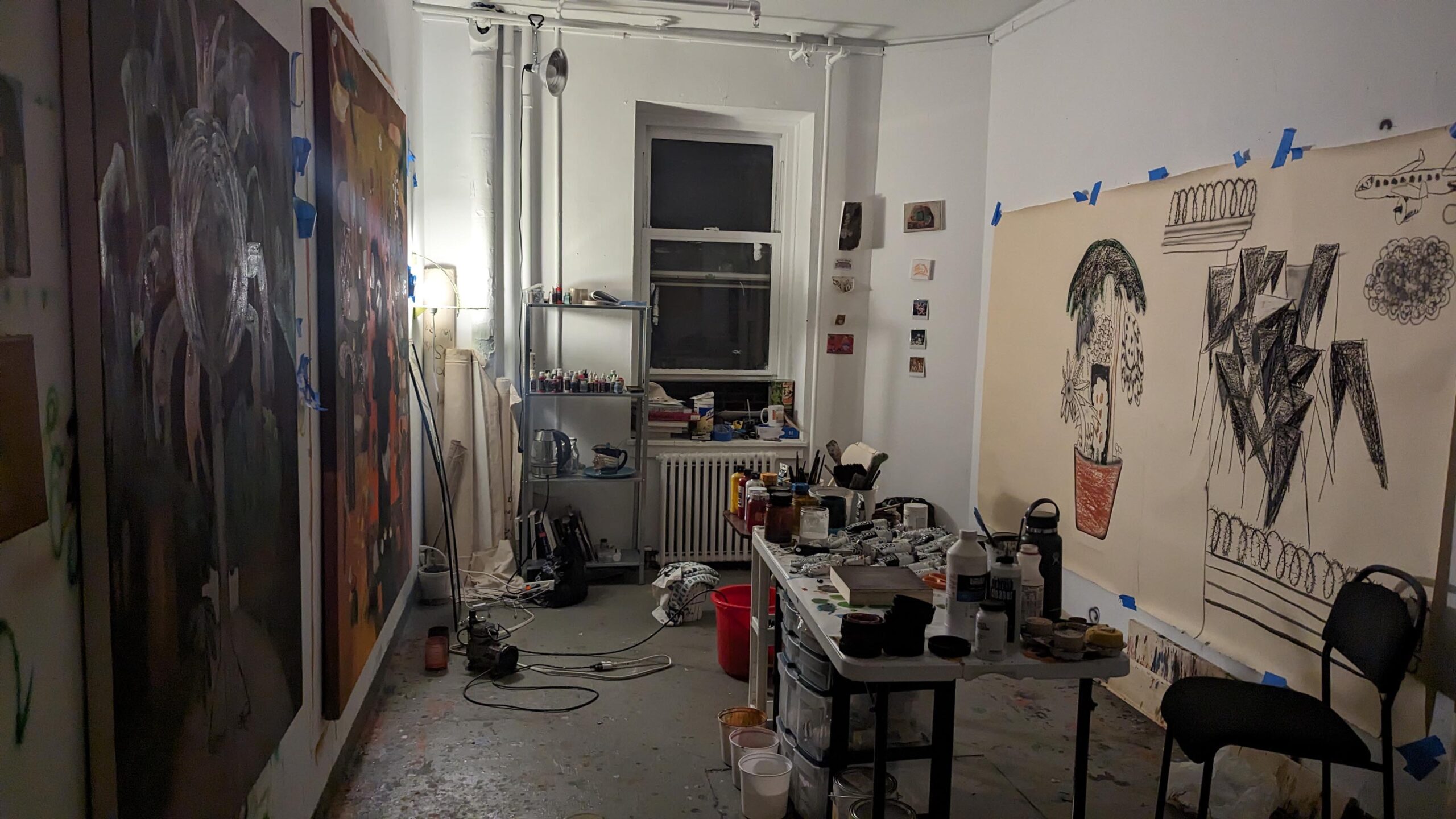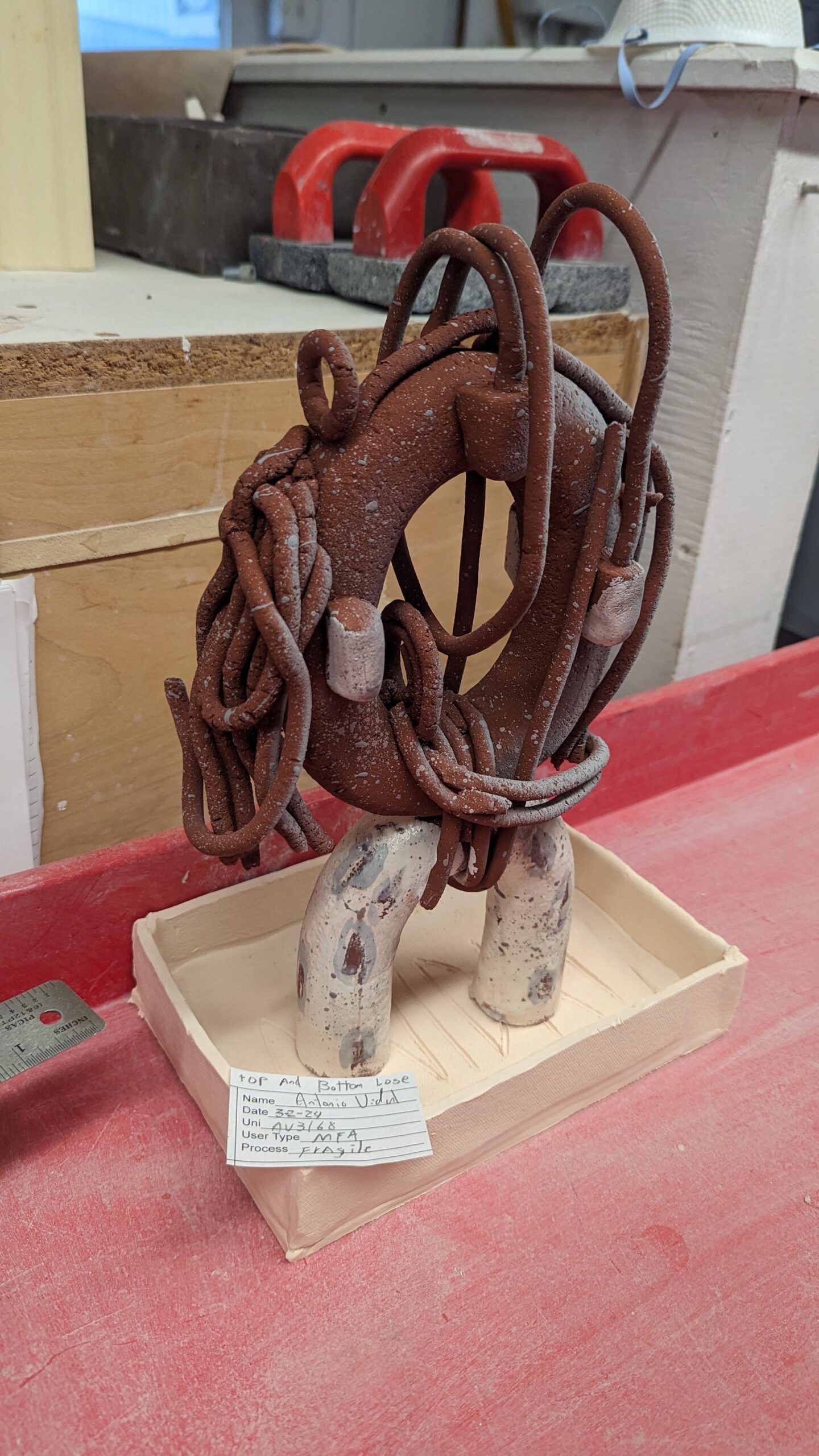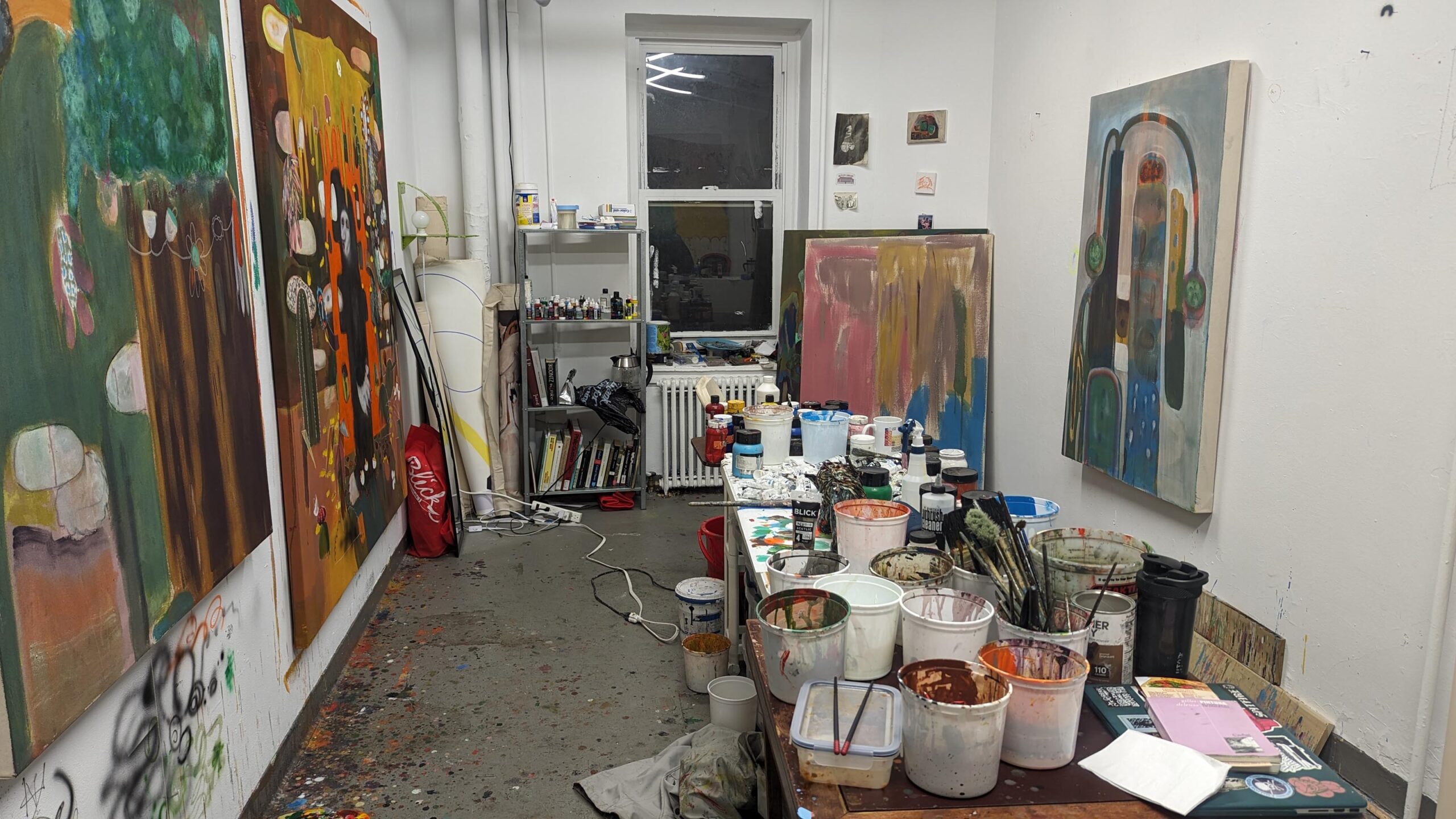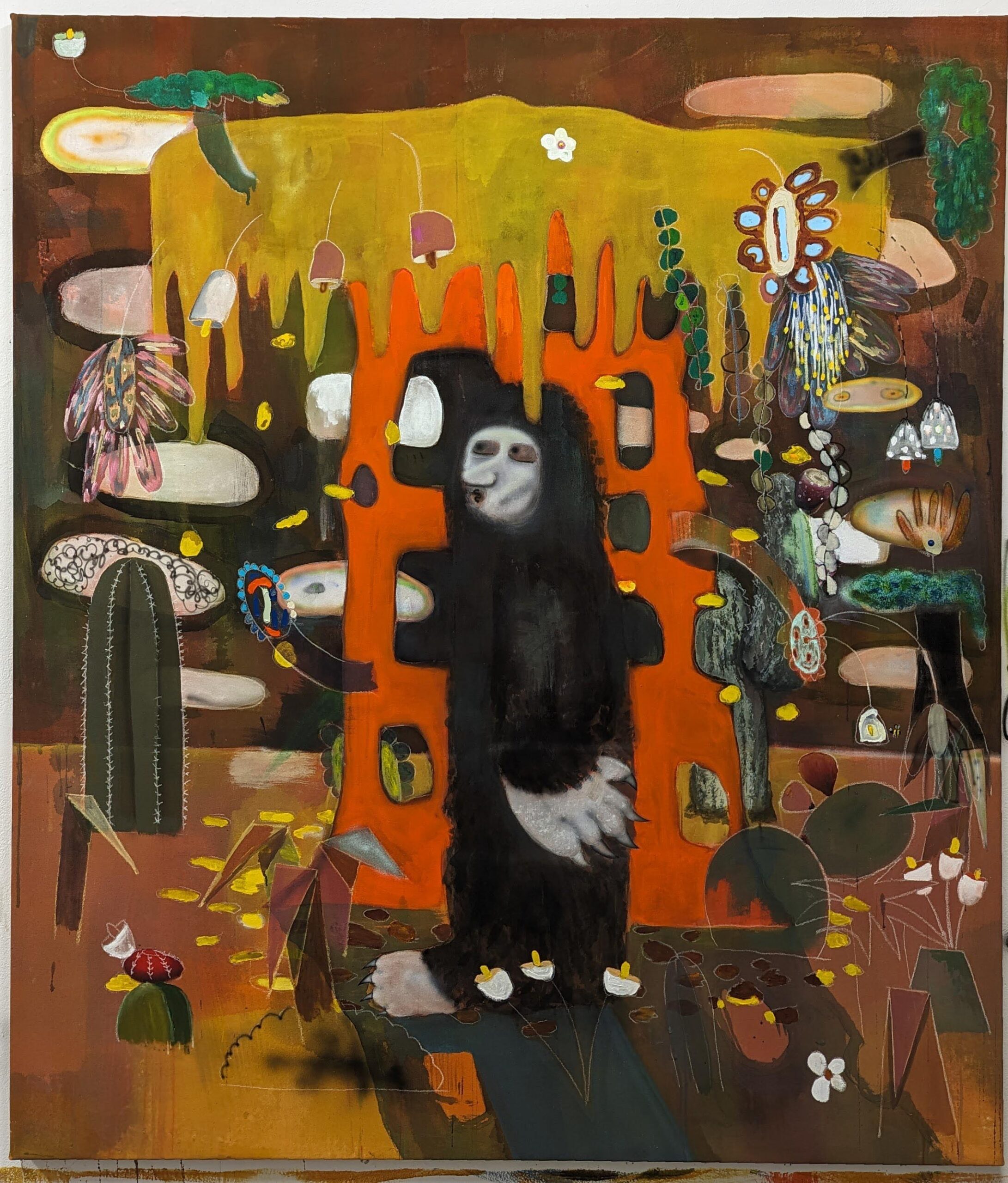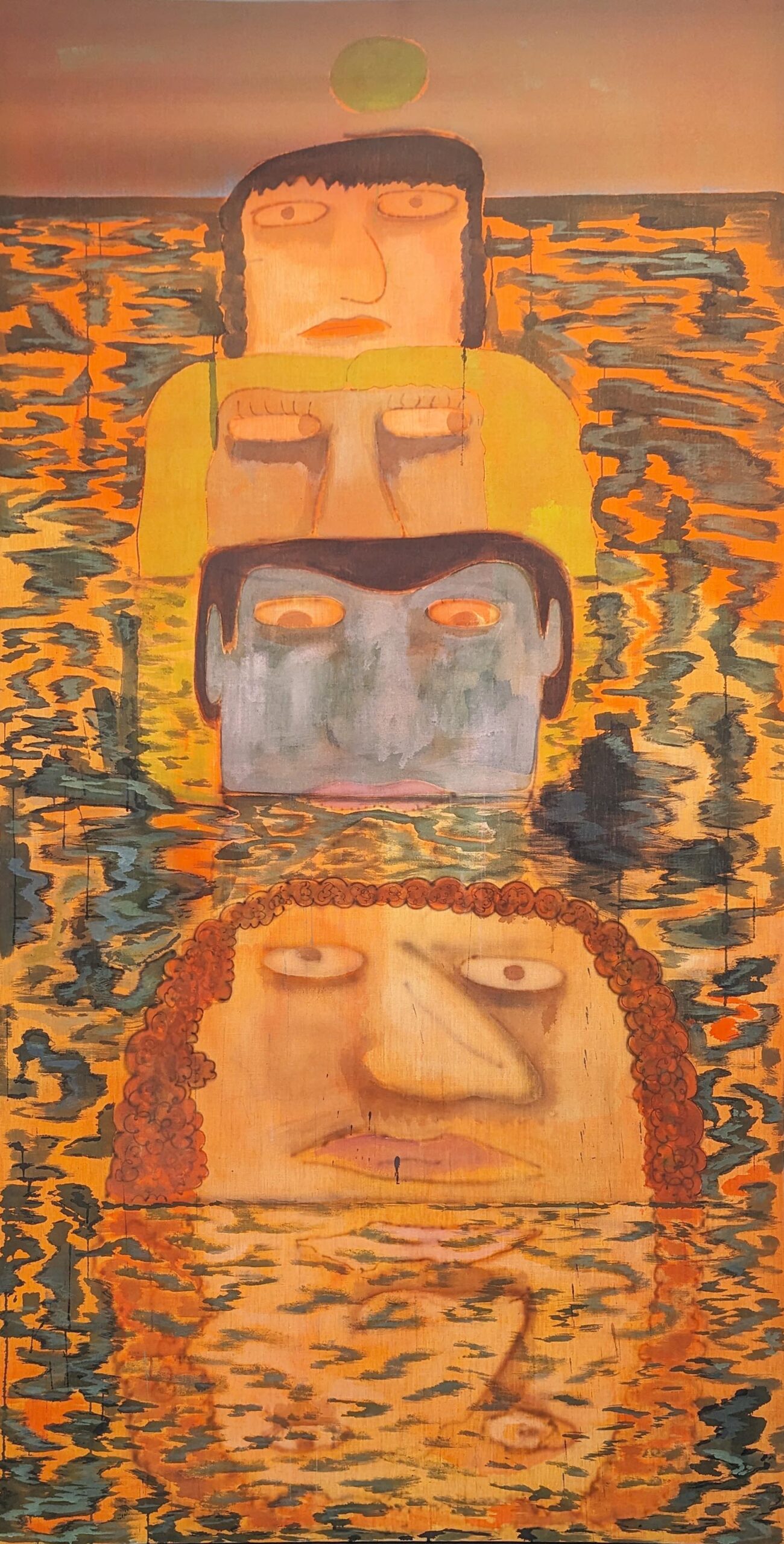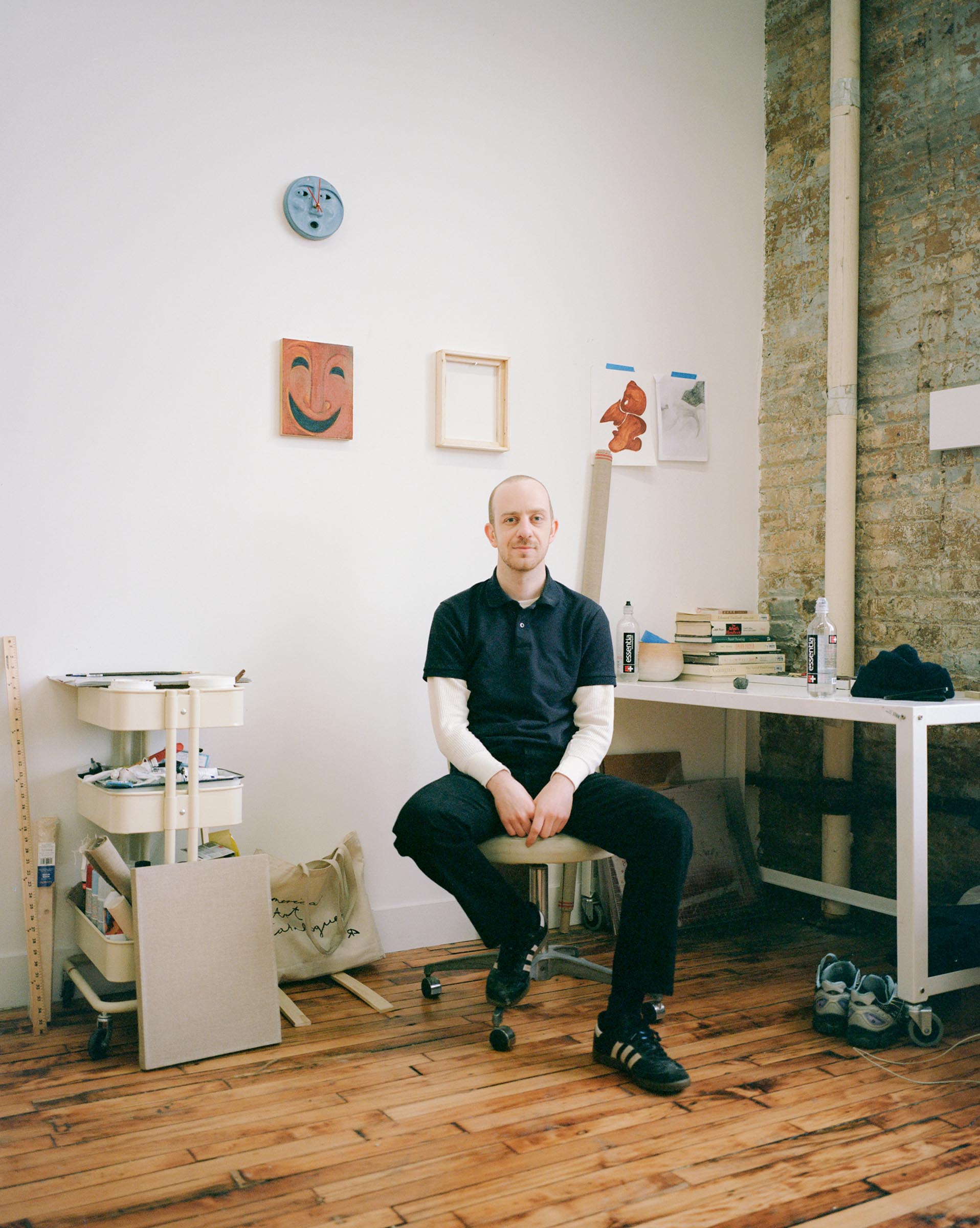How did you get into making art?
I come from a pretty conservative catholic family in Mexico City, and I didn’t get into art until I was around 15. One day, my younger sister started taking painting classes, and I decided to join her just to check it out. I got hooked pretty quickly.
Later, one of my best friends went to a pre-college program at RISD and loved it. So, I applied for the same program, thinking I’d do industrial design. But I ended up in the painting course because it had more available spots. Everything just clicked for me there. The vibe was amazing, I felt a connection with the people around me, and painting felt like the world’s most natural thing. Making work felt like such an obsessive challenge. There is never an easy answer, no linear progression, and as hard as it can be, it’s never boring.
It was during that pre-college program that I knew I wanted to do this art thing for the rest of my life. After a lot of internal struggle, hustling with my family, and figuring out finances I decided to study a Bachelor’s in Fine Arts. I did my BFA at the California College of the Arts and have been working since.
What are you currently working on?
I am currently pursuing an MFA at Columbia, so my focus is currently on experimentation. I’m exploring various mediums like ceramics and fabric sculpture, experimenting with different paint applications, and working to expand my visual vocabulary.
What inspired you to get started on this body of work?
This body of work is inspired by the idea of play in a world at its end/beggining. This concept was sparked by my reading of “Hyperobjects” by Timothy Morton, which delves into the complexities of global warming. Reflecting on this, I was reminded of the childhood game ‘the floor is lava,’ which kickstarted this body of work. I blend these concepts by situating archetypal childhood games in distorted, mutated settings that seem to belong to either the distant past or the far future.
Additionally, I draw inspiration from various religious narratives, particularly those that explore themes of apocalypse and genesis. These stories inform a lot of the imagery and narrative layers within my work.
Do you work on distinct projects or do you take a broader approach to your practice?
I typically work on multiple projects simultaneously, maintaining a broad focus and following my intuition to pursue interesting ideas. Experimentation plays a central role in my practice. While I work with larger pieces, I also dedicate time to experimenting with smaller side projects. This allows me to explore new techniques and concepts.
What’s a typical day like in your studio?
An ideal day in the studio for me begins with a brief session of sketching and reading. I then make a large pot of coffee and work as long as my body and mind allow.
Who are your favorite artists?
Lately I have been looking a lot at the work of Helen Frankenthaler, Ken price and Peter Doig. There are so so many artists whose work I love that is hard to name them all but I will try to quickfire a couple of names of artists I admire:
Philip Guston, Matisse, Mika Rottenberg, Daniel Richter, Rothko, Gaugin, Matthew Barney, Huma Bhabha amongst others…
Where do you go to discover new artists?
Mostly recommendations from friends, Instagram, and galleries in the city.


